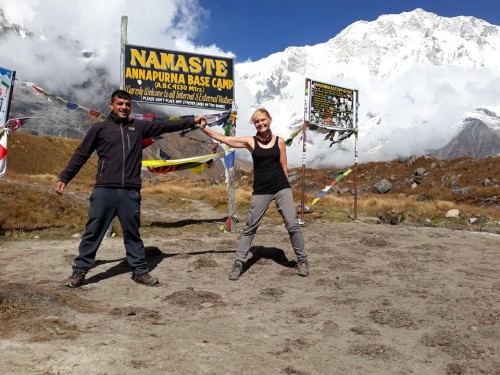The Best Time for Manaslu Circuit Trek
1st Jul, 2023

The best time for the Manaslu Circuit Trek is during the spring (March to May) and autumn (September to November) seasons. These periods offer the most stable weather, clear mountain views, and blooming rhododendron forests in spring and vibrant landscapes in autumn. The temperatures are moderate, making trekking conditions comfortable, and trails are less slippery and more accessible. Both seasons also provide ideal conditions for crossing the high Larkya La Pass, ensuring a safer and more enjoyable trekking experience in the remote Manaslu region.
Table of Contents
If you are planning a trek to Manaslu Circuit, you have to choose the best time and season to explore the wonderful Manaslu region. All the trekkers have derived the common question, "when is the best time to Manaslu Circuit Trek” before planning the trip. So, you must know the best time to easily complete the Manaslu Circuit Trek. The best time provides you with an excellent trekking experience in travel life. Generally, trekking to a high altitude area is not an easy walk every month of the year because it is difficult to know the weather, temperature and direction above 3500 meters from sea level. The weather is quickly changeable during the summer and winter season in the mountain region, which makes it terrible to get to the target on time due to landslides and snow falls. Here are weather conditions every month that support you to choose the right time to trek to Manaslu Circuit trek.
Manaslu Circuit Trek in Spring Season

The spring season in Manaslu region for trekking is normally considered the best time to visit. This season starts from March to May and offers good weather conditions, beautiful landscapes and exciting flora. The spring season comes right after the winter season in Nepal. That’s why the temperature starts to get warmer, the days become longer, skies clear and have excellent visibility and new buds and flowers bloom in the forest. In March, the weather can still be cool in higher altitudes but the temperatures will be more comfortable for walking. So the spring season “from March to May” is a wonderful choice for all travelers.
Manaslu Circuit Trek in March
The March month is the beginning month of the spring season and it is also the month of changing the weather condition from winter to spring. Beginning of March can still be cold at higher elevations like the 5 to 15 degree Celsius in the day time and can drop to -5 in the night time. The weather will be relatively stable and the skies are often clear but there may be occasional rainfall or snowfall at higher altitudes. So, the March month is the perfect month for Manaslu Circuit Trek but it requires carrying appropriate clothing and equipment for a safe and comfortable trip.
Manaslu Circuit Trek in April
No doubt the April month is the best time to trek to Manaslu region in the spring season for all trekkers. Normally the weather is favorable for walking because the day time temperature starts to warm up ranging from 10 to 20 degrees Celsius which is perfect temperature. The days will be longer than March month with the bright sunlight. This month a cool wind blows and it offers excellent visibility to see the magnificent Mountain View. The nature will be fulfilling around the trail due to lots of flowers and trees starting to bud. The trail will be crowded due to the busy season, so you have to book accommodation in advance throughout the Manaslu Circuit Trek in April.
Note: in early April, there will still be leftovers of winter such as snow and ice specially at the higher elevations. Therefore, it's advisable to bring suitable trekking gear and equipment for a safe and comfortable trip.
Manaslu Circuit Trek in May
May month is usually considered a good time to trek to Manaslu Circuit but there are a few factors to keep in mind because this month is the last month of the spring season as well as falls in the pre-monsoon season in Nepal. Sometimes it can rain especially in the afternoon, so be equipped for occasional rain, showers and some cloud cover but the temperature can range from 15 to 25 degree Celsius; it is the best temperature for walking in the higher elevations. The weather will be usually warm and stable with clear skies and good visibility. We highly recommend that you bring suitable rain gear, trekking gear and equipment.
Manaslu Circuit Trek in summer (monsoon) season
Trekking to Manaslu circuit is possible in the summer season but less favorable. Summer is also called the monsoon season in Nepal. The weather is very rainy every day. Heavy rainfall makes muddy trails and somewhere it can make landslides around the Manaslu circuit trek. Also, you should be aware that leeches, mosquitoes, bugs and flies are famous in the lower altitude during the walking.
Usually, cloudy weather is common during the monsoon season, so you may not have good visibility to watch the mountain views but landscapes, lush greenery and waterfalls make a wonderful trekking experience.
You will be equipped for rain and muddy trails by packing waterproof clothing, strong waterproof trekking shoes, and trekking poles in the slippery sections.
Manaslu Circuit Trek in June
The June month is part of the monsoon season which means you have to expect heavy rain and thick cloudy weather during the Manaslu circuit trek. So, June is not a recommended month for trekking due to challenges of weather conditions. If you are planning to trek to Manaslu circuit in June, you have to bring suitable rain gear, trekking gear and equipment.
Manaslu Circuit Trek in July
July is also part of the monsoon season and has a higher chance of rainfall. It makes the trail muddy, slippery and potential hazard due to landslides as well as not good visibility of the mountain views during the Manaslu Circuit Trek. Sometimes it is a big challenge to cross the streams due to water flow. So you have to be cautious and stay updated about trails and bridges conditions. You have to bring suitable rain gear, trekking gear and equipment to complete the Manaslu circuit trek in July Month.
Manaslu Circuit Trek in August
The temperature and weather conditions of August are similar like July but you have to expect regular rainfall. The regular rainfall does not give good visibility to watch the views and it is difficult to walk because the trail condition will be muddy, slippery and bushes. You can find many insects along the trail such as leeches, mosquitoes, bugs and flies in lower altitude. August is not an advisable time for Manaslu Circuit Trek but if you want to do this trek it requires proper trekking gear including waterproof clothes, backpack, raincoat, boots and walking poles.
Manaslu Circuit Trek in autumn season
Autumn season is one of the best trekking seasons in Nepal for popular trekking routes including the Manaslu Circuit trek. Autumn comes right after the monsoon season, it starts from September and ends in November. After the rain, the weather will be more pleasant in those months, so autumn is always a highly recommended season for trekking in Nepal. The temperature will be ranging from 10 degree to 25 degree Celsius as well as less rainfall than other seasons and it is the perfect temperature for walking. Furthermore, the greenery forest, waterfalls, rivers, streams and wildlife are at their best due to summer rain. Usually the weather is stable with clear sky that makes excellent visibility to see the wonderful views surrounding mountains. The autumn season is also a crowded season, so it is difficult to find accommodation especially in higher altitudes.
Manaslu Circuit Trek in September
September is the starting month of the autumn season and it is usually a good month to trek to Manaslu Circuit. September marks the weather changeover from monsoon to autumn in Nepal. So there will still be occasional light rain in early September especially at lower altitude but you have to be rain equipped such as raincoats, waterproof clothes and boots. The weather will be more steady and moderate temperatures. The normal temperature ranges will be 15 degree to 25 degree Celsius during the day time. However, the route will be less crowded and the perfect time to cross the Larke Pass (5200m).
Manaslu Circuit Trek in October
October is the most recommended month for trekking in Nepal including the Manaslu trek. Here are few reasons why the October is the best time trek to Manaslu Circuit:
Weather: October month falls inside the post-monsoon season in Nepal. In this time, the monsoon rain will be subsided and resulting in clearer sky and less rainfall. The weather condition will be usually stable with normal temperature during the day and cooler at night.
Temperature: October month offers the relaxed temperatures for Manaslu circuit trekking because the temperature ranges from 10 degrees to 20 degrees Celsius during the day time and drops off 0 degrees to -5 degrees Celsius during the night time. So the moderate temperatures are comfortable for trekking and it makes trekking pleasant and reduces the potential risk of landslide, avalanche as well as anxiety of cold or hot.
Clear views: the October month offers excellent visibility to enjoy the panoramic views of the mountain ranges including the mount Manaslu. So the mountain and peaks are very often visible without any difficulty to capture the best photography.
Cultural Festivals: October is not only the best time for nature but also best for cultural celebrations. The main Hindu festivals, Dashain usually fall in this month and you may have the chance to observe those festivals and cultural performances during the Manaslu Circuit Trek.
Manaslu Circuit Trek in November
November also falls in autumn so it is another good time to Manaslu Circuit Trek. The weather conditions are generally favorable with clear skies and good visibility for capturing the best photography of the surrounding Mountains and beautiful landscape. The temperature ranges from 10 degrees to 15 degrees Celsius during the day time and drops off -1 degrees to -8 degrees Celsius during the night time. It is a comfortable temperature for trekking but you may face little snow on the Larkey Pass top. You have to pack and bring suitable warm clothing and appropriate trekking gear to easily complete the Manaslu Circuit Trek.
Manaslu Circuit Trek in winter
The winter season is spanning from December to February, it is normally regarded as the off-season because it is difficult to complete the trek in Nepal including Manaslu Circuit trek. Snowfall is common and the temperatures may drop below 0 degrees to -10 degrees Celsius in a higher altitude. The trails may be covered by snow, which makes it challenging to find the right target. The winter days will be shorter and colder than other seasons in Nepal. There will be snow on the Larkey Pass top, icy trails, and raise risk of avalanches due to cold temperatures. The teahouses will be limited or closed, especially at higher altitude. Most of the time you have to face all these problems during the winter season in Nepal. It is highly recommended hiring an experienced trekking Guide in the winter season. The experienced guide will be always familiar with higher altitude weather conditions to complete the trip. So he will manage all potential problems.
Manaslu Circuit Trek in December
December is the starting month of the winter season in Nepal. Generally this month is also the best time to trek to Manaslu circuit but sometimes you have to face snow around the Larkey Pass. The average temperatures range from 5 degrees to 15 degrees Celsius during the day time but temperature may drop -5 degree Celsius especially during the morning and night time. December is quite the best time with an experienced trekking guide because the weather will be best for photography. It is highly recommended to a professional trekking guide for your safety due to the trail condition being snow and ice in the higher elevation. So, you have to pack suitable cold- weather gear with a warm sleeping bag and strong trekking boots to complete the Manaslu circuit trek in December.
Manaslu Circuit Trek in January
January is the main month of the winter season, so it is the coldest month in Nepal. Weather will be challenging due to snowfall especially in the higher elevation but perfect for mountain photography. The average temperatures range from 5 degrees to 10 degrees Celsius during the day time but temperature may drop -5 degree to -10 degrees Celsius especially during the morning and night time. Not very often to cross the Larkey pass after snowfall around the higher elevation. So, January requires previous trekking experience and suitable trekking gear with an experienced trekking guide to complete the Manaslu circuit trek. Furthermore, January is the main off-season for trekking in Nepal. It means you can only encounter fewer trekkers along the trail compared to other months.
Manaslu Circuit Trek in February
February is the end of the winter season in Nepal, it is also similar to January for trekking to Manaslu Circuit because of snowfall especially in the higher altitude. The average temperatures range also from 5 degrees to 10 degrees Celsius during the day time but temperature may drop -5 degree to -10 degrees Celsius especially during the morning and night time. February is the not best time to trek to Manaslu Circuit but offers a unique experience with peaceful landscapes. So you have to be prepared for the cold weather and potential risk. That’s why consult with us, we can help you plan your trek itinerary to ensure a safe and comfortable journey to Manaslu circuit.
Why choose the best time for Manaslu Circuit Trek?
Choosing the best time for the Manaslu Circuit Trek can significantly enhance the experience, given the region's challenging terrain, unpredictable weather, and the high altitude of Larke La Pass (5,106 meters). The ideal season provides favorable weather, improved safety on Larke Pass, and reduces risks from snow, ice, landslides, and avalanches. These conditions ensure accessible teahouses, better trail quality, breathtaking views, and a more scenic experience, while festivals and interactions with local communities enrich the cultural aspect of the trek. Trekking during poor weather can make crossing Larke Pass difficult due to heavy snowfall in winter and rain and cloud cover in summer, potentially affecting schedules. Additionally, temperatures at higher altitudes are milder in spring and autumn than in winter, providing more comfortable sleep and easier acclimatization. By choosing the best season, trekkers can safely and comfortably cross Larke Pass, enjoy stunning views, and connect with local culture, minimizing risks from severe weather and challenging trail conditions.
Which are the best months for Manaslu Circuit Trek?
The best months for the Manaslu Circuit Trek are from mid-March to May and mid-September to November. Many people commonly refer to September to November and March to April as the ideal trekking seasons. However, we highly recommend April and October as the best months for the Manaslu Circuit Trek. During these times, the trail tends to be busier due to the ideal weather, clear skies, excellent mountain views, and mild temperatures—perfect for trekking.
In April and October, major festivals like Holi and Dashain take place, allowing trekkers to enjoy and celebrate along the trail with the locals. In April, you can also enjoy blooming rhododendron forests, warm conditions, and excellent visibility. In addition to favorable weather, accommodations and food are readily available in all the villages along the route.
Considerations challenge during the Best Time for Manaslu Circuit Trek
Even during the best seasons for the Manaslu Circuit Trek (spring and autumn), trekkers may still face several challenges. These include altitude sickness (AMS), remote terrain with limited infrastructure, the demanding Larke La Pass crossing, physical strain, cold temperatures, and transportation logistics at the start and end of the trek.
The trekking route is rocky and muddy in the lower altitudes and becomes rocky and icy at higher elevations. One of the most difficult sections is sleeping at Dharmasala, where both accommodation and food are very basic due to the high altitude. It is essential to bring a high-quality sleeping bag rated for -10°C to -15°C, along with warm base layers.
Crossing Larke La Pass (5,106 meters) poses a real risk of altitude sickness (AMS), with symptoms such as headache, dizziness, nausea, and fatigue. The trek also requires significant physical effort—expect to walk 6–8 hours per day for over 12 days at high altitude, with gradual ascents and descents.
To handle these challenges, proper preparation is crucial. Hiring a professional guide is highly recommended. A good guide will help with navigation, acclimatization advice, and safety during the Larke La Pass crossing. In addition, they enrich the cultural experience by providing insights into local villages like Tsum Gaun, Lho, and Samdo.
With the right preparation, gear, and support, you can successfully complete the Manaslu Circuit Trek and enjoy one of the most rewarding adventures in Nepal.
Packing list for Manaslu Circuit Trek
Packing the right gear and equipment for the Manaslu Circuit Trek is essential—especially given the remote location, high altitude, and unpredictable weather conditions. It is highly recommended to choose lightweight, multi-functional gear and avoid unnecessary items. This approach will help reduce the overall weight of your pack, making your trekking experience more comfortable and efficient.
If you forget to pack something, don’t worry—many essential items can be rented or purchased in the Thamel area of Kathmandu before starting your trek.
Documents:
- Passport and 4 passport size photos
- Travel insurance details (in case an emergency evacuation if needed)
- Boarding passes for flights
- Driver’s license (if needed)
- Cash USD (minimum $500)
- Credit/Debit Card (Ensure you have $500 on your card incase an emergency helicopter evacuation is needed)
Sleeping:
- Sleeping bag (Comfort rating -20 Celsius recommended)
- Sleeping bag liner (Optional) - not necessary
Footwear:
- Trekking boots: one pair lightweight
- Sandals for city and tea house footwear
- Shoes for the plane and tea houses (Optional) - not necessary
- Gaiters for hiking in winter to the base camp
- Thin, lightweight inner socks
- Thick, warm wool hiking socks
Clothing for Body:
Please make sure that you have non-cotton clothing for trekking:
- Base-layer t-shirts (e.g. running t-shirts)
- Fleece/Windproof jacket
- Waterproof jacket
- Down jacket for warmth
- Base-layer trousers (optional)
- Waterproof trousers
- Trekking trousers
- Trekking shorts (Optional)
- Gloves, wool hat and sun hat
- Bandanna or scarf
Health Requirements (Basic First Aid Kit)
- First-aid kit; should contain lip salve, Aspirin, Band Aids, anti-histamine, Imodium or similar tablets for mild cases of diarrhea
- Re-hydration powder, extra prescription drugs you may be taking if any particular
- Wet wipes for cleaning can be purchased in Kathmandu
- Sanitizer, shampoo, Towel, wet wipes and washing soap
Others:
- Sunglasses and Sun cream
- Book (reading and writing materials) - not necessary
- MP-3 /Music, headphones and ear plug (who know some people on group are snoring) as optional.
- A day bag: 35 liters
- A duffel or rucksack with straps to go over your back (Max 12 kg of weight for porters to carry) - normally provide by trekking agency
- Daypack Rain Cover
- Dry Liner or Dry Bag- optional
- Water bottle/thermos/ camel bag: At least 2 L. Nalgen bottles best.
- Water Purification Tabs, Steri PEN, or filter (bottled water is expensive)
- Mobile and camera charger
- Power Bank
- Headlamp
General Toiletries:
- Toilet papers/ tissue – you can buy in Nepal
- Contact lenses, Glasses (if needed)
- 1 medium sized quick drying towel
- Tooth brush/paste (preferably biodegradable)
- Nail clippers
- Face and body moisturizer
- Feminine hygiene products
- Small mirror - optional
- On Personal Hygiene
- Anti-bacterial hands wash
Others (optional):
- Trekking Poles
- Large plastic bags – for keeping items dry inside your kit / duffel bag
- Travel game i.e. chess, backgammon, and scrabble. (For luxuries)
- Binoculars (for luxuries)
- Trail Map/Guide book (if you are alone)
FAQ for Best Time for Manaslu Circuit Trek
What is the best season to do the Manaslu Circuit Trek?
Autumn (September to November) and spring (March to May) are the best seasons for the Manaslu Circuit Trek. During these times, the weather is ideal for trekking, with clear skies, comfortable temperatures, and excellent visibility for enjoying the surrounding landscapes and mountain views. These seasons are also great for photography and coinciding with local festivals, adding cultural richness to your journey.
Which are the best months to do Manaslu Circuit Trek?
September, November, March, and May is the best months to do the Manaslu Circuit Trek. These months offer the most favorable weather conditions, with minimal rain and snow. The trails are also less crowded, making it easier to find accommodations and enjoy a more peaceful trekking experience.
How is the weather during spring and autumn on the Manaslu Circuit?
During spring (March to May) and autumn (September to November), the weather on the Manaslu Circuit is generally stable, dry, and ideal for trekking. Spring brings blooming rhododendron forests, clear skies, and moderate temperatures, making it perfect for scenic views and nature photography. Autumn offers crisp mountain air, excellent visibility, and post-monsoon freshness, ideal for crossing high passes like Larkya La. Both seasons provide the best conditions for a safe, comfortable, and visually stunning trekking experience in the Manaslu region.
Can I do the Manaslu Circuit Trek during the monsoon season?
Yes, it is possible to do the Manaslu Circuit Trek during the monsoon season (June to August), but it is generally not recommended. This time of year brings heavy rainfall, especially in the lower regions, leading to slippery trails, landslides, and limited mountain views due to cloud cover. Leech-infested paths and travel disruptions are also common. However, the upper parts of the trek, closer to the Tibetan border, receive less rain and remain relatively drier. If you choose to trek during the monsoon, proper gear, flexibility, and caution are essential. Most trekkers prefer the spring and autumn seasons for safer and more enjoyable conditions.
Is winter a good time to trek the Manaslu Circuit?
Trekking the Manaslu Circuit in winter (December to February) is possible but challenging. The weather is cold and dry, with daytime temperatures ranging from 5°C to -10°C, especially at higher elevations. While the trails are less crowded and the skies often clear, heavy snowfall can block the Larkya La Pass (5,160m), making it difficult or impossible to cross. Teahouses at higher altitudes (at Dharmasala) may be closed, and limited services are available. Winter trekking is best suited for experienced trekkers prepared for cold conditions and with experiencd guide and flexible itineraries. For a safer and more comfortable experience, spring or autumn is highly recommended.
What are the advantages of trekking Manaslu in spring (March to May)?
Trekking the Manaslu Circuit in spring (March to May) offers several advantages such as the weather is generally stable and dry, with mild temperatures and clear skies, providing excellent visibility of snow-capped peaks like Manaslu, Himalchuli, and Ngadi Chuli. Spring is also the season of rhododendron blooms, turning the forests vibrant with color and enhancing the scenic beauty of the trail.
The Larkya La Pass is usually accessible, and the risk of snowfall or route closures is low. Spring also provides a great opportunity to experience local culture, as several festivals take place during this season. The trails are less crowded than in peak autumn months, allowing for a more peaceful and immersive trekking experience. Overall, spring is one of the best seasons to enjoy the natural and cultural richness of the Manaslu region.
Why autumn (September to November) is considered ideal for the Manaslu Circuit?
Autumn (September to November) is widely regarded as the ideal season for trekking the Manaslu Circuit due to its stable weather, crystal-clear skies, and pleasant daytime temperatures. After the monsoon rains, the air is fresh and clean, offering stunning panoramic views of snow-covered peaks like Mt. Manaslu and surrounding Himalayan ranges.
The trails are in excellent condition, and the risk of landslides or snow-blocked paths is minimal, making it easier to cross high-altitude passes like Larkya La. Autumn also coincides with some of Nepal’s most vibrant cultural festivals, such as Dashain and Tihar, providing trekkers a chance to experience the local traditions and warm hospitality of the Himalayan communities.
With a perfect blend of scenic beauty, cultural richness, and favorable trekking conditions, autumn is the most popular and reliable season for completing the Manaslu Circuit Trek.
Are the mountain views clearer in spring or autumn during the Manaslu Trek?
Both spring (March to May) and autumn (September to November) offer excellent mountain views during the Manaslu Circuit Trek, but autumn generally provides the clearest visibility. After the summer monsoon, the air is crisp and dust-free, creating sharp, uninterrupted views of peaks like Mt. Manaslu, Himalchuli, and Ganesh Himal.
In spring, although the skies are mostly clear, there may be occasional haze due to rising temperatures and moisture. However, spring offers the added beauty of blooming rhododendrons and lush landscapes, enhancing the overall scenery.
If your priority is crystal-clear views of the mountains, autumn is typically the better choice, while spring is perfect for those who enjoy a mix of great views and vibrant natural surroundings.
How crowded is the Manaslu Circuit Trek during peak trekking seasons?
Compared to popular routes like Everest and Annapurna, the Manaslu Circuit Trek remains relatively less crowded, even during the peak trekking seasons of spring (March–May) and autumn (September–November). While these months attract more trekkers due to ideal weather conditions and clear mountain views, the restricted permit system and limited number of trekkers help preserve the trail's remote and peaceful atmosphere.
You may encounter other groups in teahouses or along the trail, especially near villages and at popular viewpoints, but the route rarely feels overcrowded. This balance of spectacular scenery, cultural richness, and fewer crowds makes the Manaslu Circuit an excellent alternative for those seeking a quieter Himalayan trekking experience during the best seasons.
What are the risks of trekking Manaslu in the off-season (summer/winter)?
Trekking the Manaslu Circuit in the off-season, such as summer (June to August) or winter (December to February), comes with increased risks and challenges.
In summer (monsoon season), heavy rainfall can lead to landslides, slippery trails, leeches, and limited visibility due to cloud cover. Travel delays and trail blockages are also common, especially in lower regions.
In winter, the temperatures drop significantly, especially at higher altitudes, with daytime highs around 5°C and nighttime lows reaching -10°C or colder. The Larkya La Pass may be blocked by snow, making it dangerous or impassable. Additionally, some teahouses close in winter, reducing accommodation and food options.
Trekking in the off-season is best suited for experienced trekkers who are well-prepared for extreme weather and flexible with their itinerary. For most trekkers, spring and autumn remain the safest and most enjoyable times to complete the Manaslu Circuit.
How does the weather affect trekking conditions and safety on the Manaslu Circuit?
Weather plays a important role in determining both the trekking conditions and safety on the Manaslu Circuit. In spring (March–May) and autumn (September–November), the weather is generally stable, dry, and clear, offering the safest and most comfortable trekking experience. Trails are well-maintained, visibility is excellent, and high passes like Larkya La (5,160m) are usually accessible.
In contrast, monsoon season (June–August) brings heavy rain, causing landslides, slippery trails, leeches, and poor visibility, making trekking more hazardous. Similarly, winter (December–February) brings extreme cold and heavy snowfall, especially at higher altitudes, increasing the risk of frostbite, hypothermia, and pass closures.
Unpredictable weather at high elevations can also affect helicopter evacuation and teahouse availability, so trekkers must plan accordingly and remain flexible. Being aware of seasonal weather patterns is essential for ensuring safety, proper gear selection, and successful completion of the trek.
Conclusion
Manaslu Circuit Trek can be done throughout all months but there are different weather and temperature conditions. Autumn and spring are the best seasons in Nepal and that offer best trekking conditions, moderate temperatures, stable weather and fewer chances of rainfall and snowfall. The trail will be crowded and difficult to find accommodation but your guide will manage that.
However, the winter and summer seasons are not recommended season in Nepal including Manaslu circuit trek. You can trek to Manaslu Circuit but it requires extra preparation and you must be aware of rainfall, snowfall and colder temperature. Some trekkers can do Manaslu Circuit trek during the off-season (summer and winter) but you must preparation by suitable trekking gear with experienced guide.
If you are planning to do Manaslu Circuit Trek, please contact us. High Pass Adventure teams are always with you to assist at any time and create the best itinerary and inform you about trekking gear, weather conditions, temperature and trail conditions around the Larkey pass.
Are you interested on any of your travel serveices?
Make Inquiry NowRecent From Blog

15th Jun, 2023
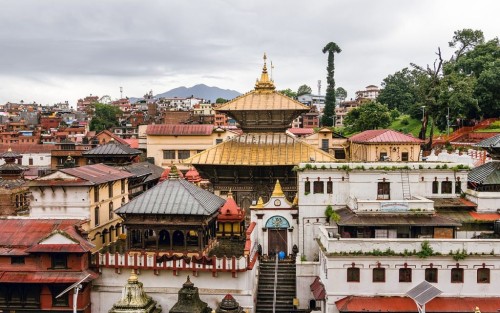
21st Feb, 2021

28th Feb, 2018

5th Sep, 2023

13th May, 2019
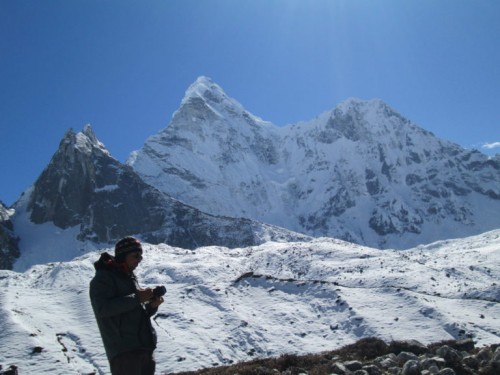
19th Feb, 2019

8th Feb, 2021
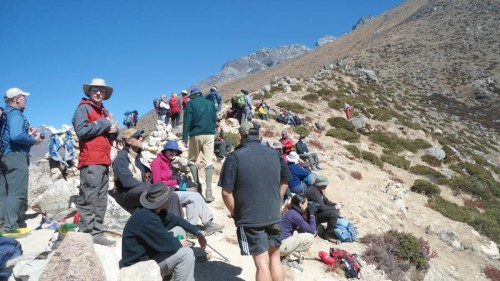
21st Jan, 2021

29th Jul, 2020
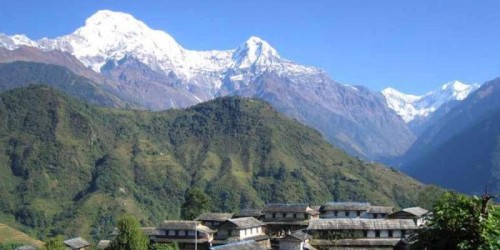
3rd May, 2019

30th Apr, 2020

3rd Apr, 2020

17th Jul, 2020
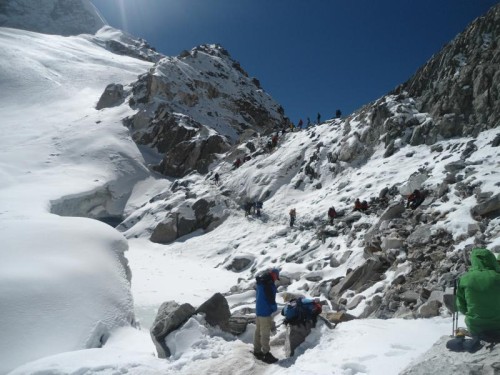
26th Mar, 2020
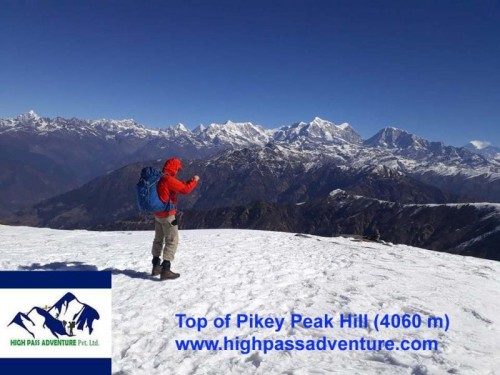
31st Mar, 2020

19th Jun, 2023
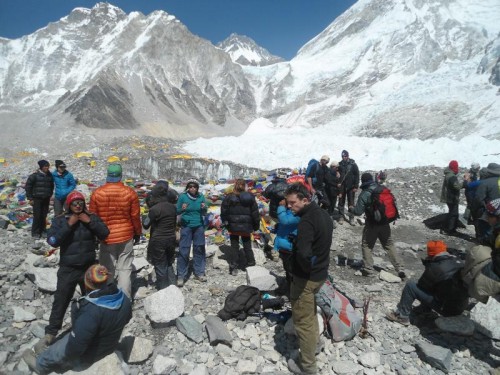
11th Feb, 2020
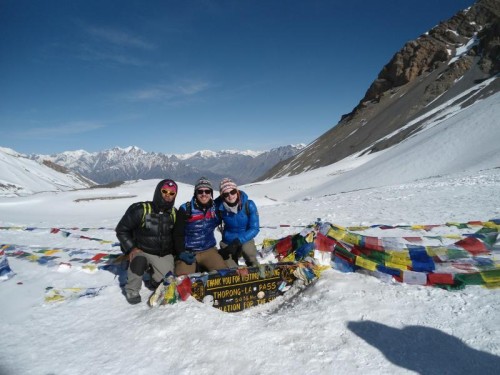
11th Mar, 2020

27th Sep, 2019

17th May, 2019

26th Jul, 2020

6th May, 2019
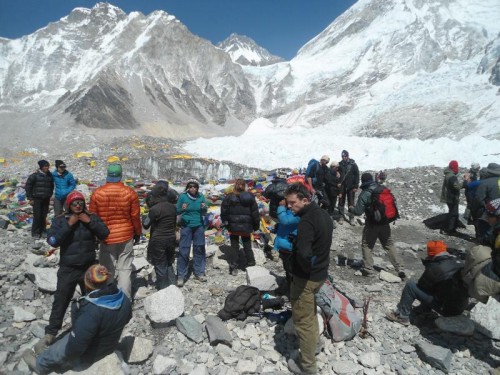
5th Mar, 2019
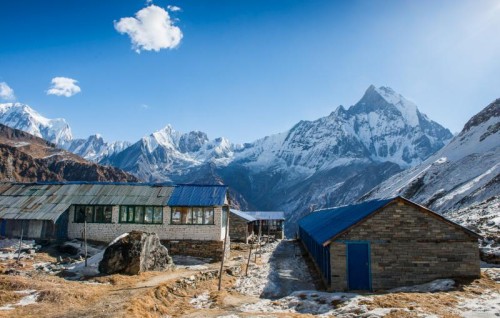
7th Mar, 2020

18th Feb, 2019

12th Sep, 2019

27th Mar, 2018

27th Mar, 2019

2nd Mar, 2019

16th Jan, 2019

1st Jul, 2023

5th Jul, 2023

5th Jul, 2023

5th Jul, 2023

5th Jul, 2023
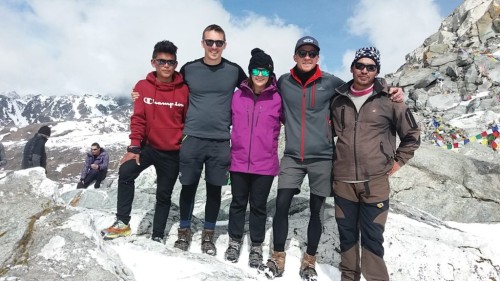
5th Dec, 2019

6th Jan, 2019
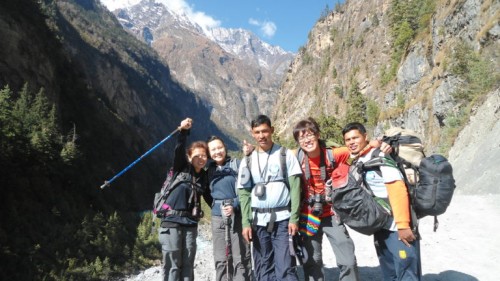
28th Feb, 2018

9th Dec, 2018

11th Dec, 2018

5th Oct, 2023

3rd Jan, 2024
.jpg)
27th Jan, 2024

29th Jan, 2024

19th Jan, 2025

7th Feb, 2025

17th Feb, 2025

9th Mar, 2025

15th Mar, 2025

18th Mar, 2025

23rd Mar, 2025

25th Mar, 2025

26th Mar, 2025

24th Apr, 2025

21st May, 2025

21st May, 2025

22nd Jun, 2025

22nd Jun, 2025

4th Jul, 2025

14th Jul, 2025

14th Sep, 2025



